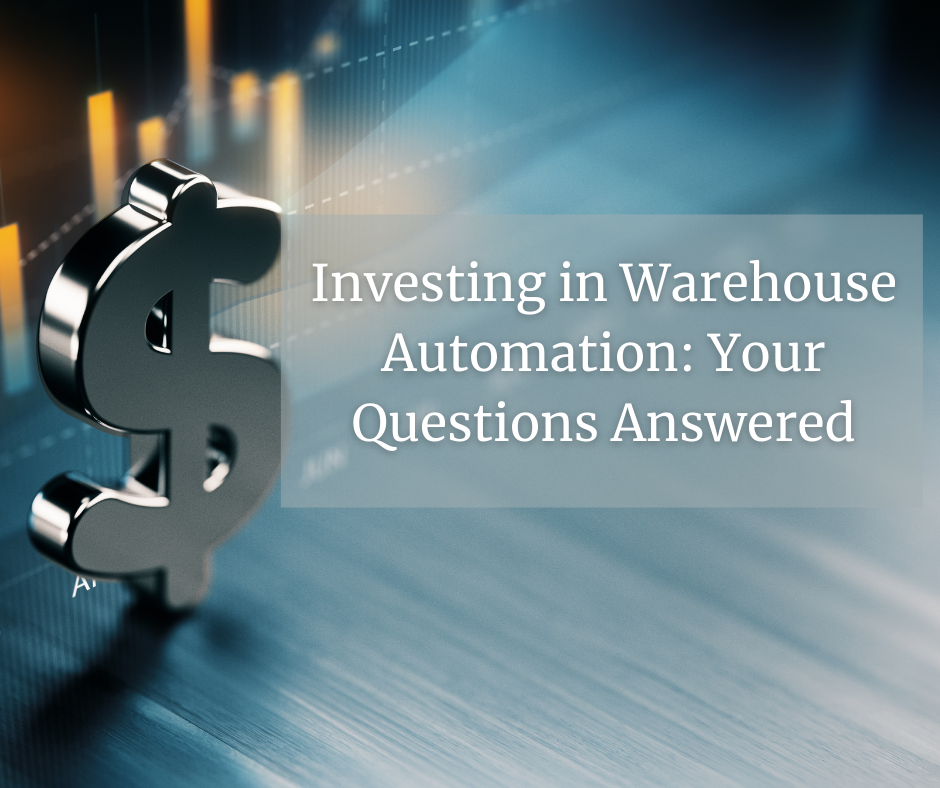November 30 2021

The majority of warehousing decision makers face common challenges: accurately tracking inventory in and out of the facility, excessive material handling causing damage or product quality issues, inefficient space utilization and more. The sheer number of moving pieces in any logistics operation means that one wrong step could trickle down into all other areas of the supply chain. One way that many companies are looking to solve these issues is through automation.
In 2019, warehouse automation grew to a $15 billion industry, and by 2026, those numbers are projected to double. But it’s estimated that nearly 80% of warehouses are still operating without automation, sacrificing valuable time, quality, and resources.
So what is warehouse automation and how can you get started? Here’s what you need to know:
What automation technology is available?
A warehouse can be automated in a number of different ways, but the most common two involve either integrating automation systems into existing warehouses or building new facilities that are designed entirely to be automated.
In either scenario, the technology behind automated warehousing can help your business run smoother and smarter:
- Automated Storage / Retrieval System (AS/RS) – AS/RS technology is a modernized warehousing and storage solution. Typically, these systems are made up of technologies including layer picking, conveyors, storage/retrieval machines (S/RMs) and pallet flow systems, to name a few. With AS/RS, the entire warehouse process can be automated from production through outbound staging and shipping and everything in between.
- At Westfalia, these systems are customizable by pallet size, width and height, as well as single, double- or multiple-deep storage lanes to ensure high-density storage to maximize space and energy efficiency. AS/RS technology can typically double storage capacity, allowing for increased throughput and future growth.
- Automated technology like conveyors and layer picking not only makes the production, storage and distribution processes more efficient, it also reduces the number of touches on a particular product, which can improve product accuracy, quality and freshness.
- Warehouse Execution Systems (WES) - A WES uses real-time data to optimize material flow throughout your warehouse, continuously providing an efficient use of space and equipment. The cloud-based data analytics offered with a WES increases order accuracy, reduces losses, and boosts throughput and productivity—and can be integrated seamlessly into your existing technology!
- Integrating a high-density AS/RS with a WES can help warehouses better manage their inventory all while receiving accurate, real-time information on products moving throughout the warehouse.
Are there downsides to automation?
For a newcomer to warehouse automation, the process can seem overwhelming and it’s no secret that having the latest technology and overhauling a facility for automation can be a significant investment. But you’ll quickly find ROI is achieved within just a few years, not only in cost savings but in streamlining your warehouse’s accuracy, efficiency and overall performance. Plus, if you work with the right automation team, they’ll streamline the process and be able to design the best solution for your unique warehousing needs.
What’s in it for me?
Despite initial costs, warehouse automation will prove to be the smartest decision you can make for your business. Here’s why:
- Efficiency - Automated systems speed up warehouse processes in order fulfillment and shipping, meaning you can take on more orders and push more orders out the door sooner.
- Accuracy - By bringing your warehouse management into the cloud, it removes the inevitability of human error. This means more accurate order and inventory tracking with less need for product handling that can lead to contamination or damage.
- Flexibility - When demand skyrockets and your operation isn’t equipped to handle it, an automated warehouse uses WES software to predict ebbs and flows and best manage the fast-changing elements within a warehouse.
- Safety – While improved efficiency normally means your employees working harder and faster, having an automated system means you have machines doing the heavy lifting for you, turning what could have been a safety hazard into a risk-free boost in productivity.
- Smaller Footprint – Whether you’re looking to minimize square footage or reduce energy usage or cost, an AS/RS is designed to use space more efficiently. Westfalia’s high-density automation technology allows warehouses to store pallets up to 12 positions deep and can generally support racks up to 140’ high. This can reduce energy usage by 50% and reduce space needed by 40% when compared to a conventional warehouse.
Where do you go from here?
Every warehouse is different, facing unique challenges that need customized solutions. Westfalia’s dedicated team of experts is here to help find the right solution to fits your unique needs.
Our team’s approach starts with a comprehensive data analysis, which allows us to take a deep dive into how your business operates and find the right solution for your business needs. Reach out to our team to start the conversation today!
Still unsure if warehouse automation is right for you? You can take a look at our customers’ success stories here.

